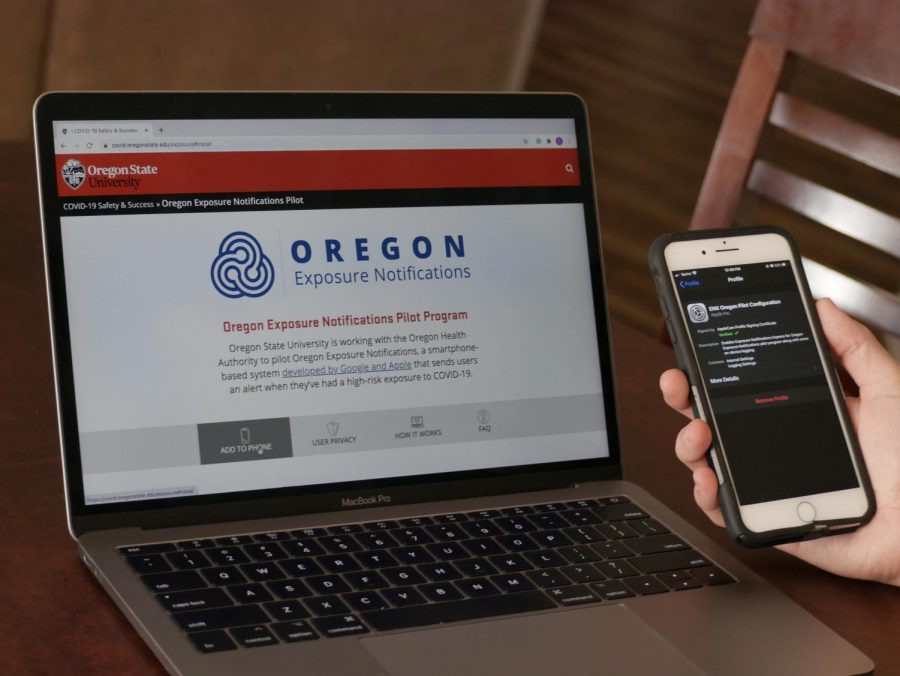Oregon exposure notifications pilot system expanded to OSU
January 4, 2021
Students, faculty and staff at Oregon State University can help slow down the spread of COVID-19 by participating in a pilot project of Oregon Exposure Notifications System, a collaboration between OSU and the Oregon Health Authority.
On Sept. 16, Governor Kate Brown announced that Oregon would take part in a new smartphone-based test of digital exposure notification program along with other states including Virginia, California, Colorado and Washington.
“Exposure notifications are alerts that people can receive on their phones to let them know if they’ve been in contact with someone diagnosed with COVID-19,” Hernandez Delia, communications officer for external relations division at Oregon Health Authority said via email. “Oregon Exposure notification pilot program is the test phase which will allow public health officials to ensure that the system is configured correctly before further rollout to the general public in Jan. 2021.”
This technology is powered by Apple and Google and based on non-identifiable Bluetooth signals on your smartphone. It gives you an easy, automated way to indicate proximity and duration of exposure to someone with COVID-19.
Oregon Exposure Notifications will help slow the spread of COVID-19. It allows community members to receive anonymous alerts if you have been in close contact—through day-to-day interactions—with other users who have tested positive for COVID-19 for a sustained period of time.
On the other hand, participants who you were in close proximity, will be anonymously notified if you test positive, without sharing any personal information.
If users receive an alert from the system, they will be provided next steps including health information, resources and referrals to community services. Pilot users who receive an exposure notification will be invited to get a free follow-up COVID-19 test from TRACE-OSU to help understand the impact
of their exposure.
The Oregon Exposure Notifications app is being made available for OSU faculty, staff and students and received positive responses from users since it was launched.
“In about four weeks we’ve had over 10,000 people sign up… It’s impressive that OSU students and faculty are so committed not only to personal health, but community public health,” said Steve Clark, vice president for University Relations and Marketing at OSU. “Over the last eight months, we’ve been very impressed by how our students and employees not only are participating in testing, not only now participating in this exposure notification system, but are utilizing personal and public health measures…to contribute to a safer
and healthier community.”
With just one-month’s worth of experience with the program, Tuyet To, a junior OSU student in the College of Business shared that “…everyone that I know, they all use this application and we all believe that it is useful and it is needed for our society at this time.”
This system is designed to preserve your privacy without any tracking of personal or location information. This application gives users the control of their information as well as their choice of using.
“Their personal information and their location information is always held in contents. There is no personal information that will be shared, no location information will be shared. It is totally confidential. And a person who is enrolled in the program can drop the program at any time,” Clark said.
After six weeks of launching this pilot program, the Oregon Health Authority hopes that this project helps officials understand how the application can best support the health of Oregonians. It is expected to be available to everyone in Oregon in January of 2021.
Members of the OSU community can download the program on their smartphone by going to the OSU COVID-19 website.











































































































